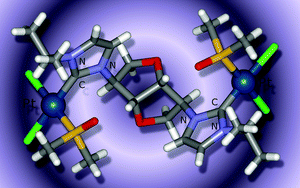Chiral Ag(i) and Pt(ii) complexes of ditopic NHC ligands: synthesis, structural and spectroscopic properties†‡
Abstract
The

- This article is part of the themed collection: In Celebration of David Cole-Hamilton's Career in Chemistry
* Corresponding authors
a
School of Chemistry, Cardiff University, Main Building, Park Place, Cardiff, UK
E-mail:
dervisia@cardiff.ac.uk
Fax: +44 (0) 29 20874030
Tel: +44 (0) 29 20874081
b
School of Chemistry, Newcastle University, Newcastle upon Tyne NE1 7RU, UK
E-mail:
bill.clegg@newcastle.ac.uk
Tel: +44 (0) 191 222 6649
c
School of Chemistry, University of Southampton, Highfield, Southampton, UK
E-mail:
s.j.coles@soton.ac.uk
Fax: +44 (0) 2380 596 723
Tel: +44 (0) 2380 596 722
The

 Please wait while we load your content...
Something went wrong. Try again?
Please wait while we load your content...
Something went wrong. Try again?
P. Marshall, R. L. Jenkins, W. Clegg, R. W. Harrington, S. K. Callear, S. J. Coles, I. A. Fallis and A. Dervisi, Dalton Trans., 2012, 41, 12839 DOI: 10.1039/C2DT31740K
This article is licensed under a Creative Commons Attribution 3.0 Unported Licence. You can use material from this article in other publications without requesting further permissions from the RSC, provided that the correct acknowledgement is given.
Read more about how to correctly acknowledge RSC content.
 Fetching data from CrossRef.
Fetching data from CrossRef.
This may take some time to load.
Loading related content
